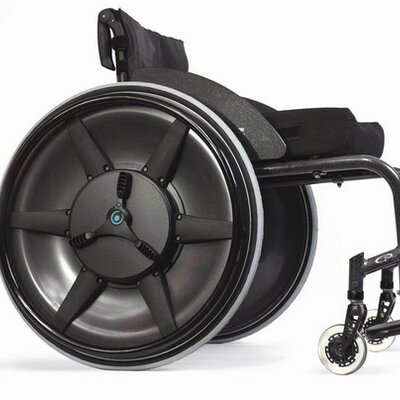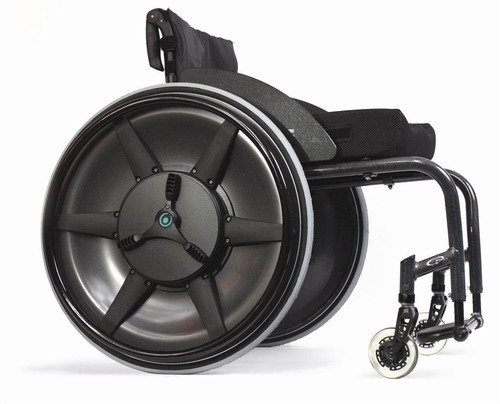E2227 MANUAL WHEELCHAIR ACCESSORY, GEAR REDUCTION DRIVE WHEEL

MAGICWHEELS wheelchair Medicare justification reimbursement overview:
The MAGICWHEELS®2-gear manual wheels fit onto your existing wheelchair or your next new manual wheelchair frame. Depending on your wheelchair model, an adaptor may be required. In this case, a digital photoof your wheelchair axle may be needed to confirm the proper fit. HOMCOM 13.7 Gallon Mop Water Bucket Wringer Cart with Easy to Use Side Press Wringer, Smooth Wheels, Mop-Handle Holder 4.1 out of 5 stars 11 $79.99 $ 79. 99 ($79.99/Count) $85.99 $85.99. Quickie ultra lightweight folding wheelchairs are so easy to store. Ultra lightweight wheelchairs by Quickie have padded seats and backs so riding is comfortable while providing full mobility. If you're in the market for an ultra lightweight wheelchair from Quickie call us at 855-339-5155 or email info@dmehub.net for more information.
- Based on MAGICWHEELS unique and innovative features, SADMERC created a new billing code -E2227 - “Manual Wheelchair Accessory, Gear Reduction Drive Wheel”) - effective January 1, 2008
- MAGICWHEELS have been successfully funded by Medicare/Medicaid, insurance companies and managed care organizations.
- MAGICWHEELS often represents the least costly alternative, compared with a power wheelchair or power, assisted-push wheels.
Who qualifies for MAGICWHEELS?
- First, the client must qualify for a manual wheelchair, and for Medicare claims the client must be self propelling in a manual wheelchair for at least one year.
- Second, it must be documented that MAGICWHEELS provides either of the following:
- Enhanced functionality and independence, OR
- Reduction in shoulder pain
- Note: If the client’s medical equipment benefit is limited to use within the home (i.e., Medicare), the medical justification must specifically state how MAGICWHEELSwill assist the client in performing his/her Mobility Related Activities of Daily Living (MRADLs) or reduce shoulder pain while propelling within the home (consistent with Medicare’s mobility algorithm). In these cases, the outdoor benefits of use will not be considered adequate justification, documentation must focus on the indoor benefits of MAGICWHEELSfor the client.
ATTENTION:For Medicare claims, a gear reduction drive wheel (E2227) is covered if all of the following criteria are met:


- The patient has been self-propelling in a manual wheelchair for at least one year; and
- The patient has had a specialty evaluation that was performed by a licensed/certified medical professional, such as a PT or OT, or physician who has specific training and experience in rehabilitation wheelchair evaluations and that documents the need for the device in the patient’s home. The PT, OT, or physician may have no financial relationship with the suppliers; and The wheelchair is provided by a supplier that employs a RESNA-certified Assistive Technology Supplier (ATS) or Assistive Technology Practitioner (ATP) who specializes in wheelchairs and who has direct, in-person involvement in the wheelchair/product selection for the patient.

MAGICWHEELS 2-gear wheelchair drive is an option that may be added to a manual wheelchair. It provides a user with additional assistance by providing “leverage” through gearing (like a bicycle, not through a motor). The two-gear wheels offer two power ratios — 1:1 (no help, no extra friction) and 2:1, providing 100 percent more hill-climbing force. They’ll fit on any wheelchair, including those that don’t have quick-release wheels; will add only about 10 pounds per chair, thanks to having no battery; and won’t affect width or folding. Gears are shifted by a single hand on each wheel hub (precise finger control isn’t necessary).
The MAGICWHEELS 2-gear wheels were developed to assist a wheelchair user with varying forms of mobility disorders ranging from arthritis, multiple sclerosis, and muscular dystrophy, paraplegia and tetraplegia, and may relieve or reduce “manual wheelchair syndrome.” This syndrome, caused by propelling a manual wheelchair, consists mainly of repetitive stress injuries such as rotator cuff and carpal tunnel syndrome, which are common problems among manual wheelchair users. For clinical results see the University of Maryland clinical study: “Effect of two-speed manual wheelchair wheel on shoulder pain in wheelchair users” (available separately). Without the ability to have some additional assistance, manual wheelchair users basically have two choices. 1. Ask someone to push them. 2. Switch to a powered device, such as a power wheelchair. The first option carries the implied frustration of relying on someone else; the second, the expense of a lift van and home modifications.
Good points to include in justification:
- MAGICWHEELS 2-gear wheelchair drive provides a less stressful means of self- propulsion for manual wheelchair users who need to protect and preserve their upper body strength and function required for progressive conditions (i.e. MS) and long-term use.

- MAGICWHEELS 2-gear wheelchair drive provides a more functional and less expensive option (vs. a power wheelchair) for people who still have some ability in pushing a manual wheelchair. Without the added option of MAGICWHEELS they will not be able to perform their MRADLs within the home.
Magic Wheels Quickie Wheels
- MAGICWHEELS 2-gear wheelchair drive meets the medical needs of those users with slower progressing neuromuscular diseases that just need assistance propelling up ramps, through door thresholds, and over uneven terrain.
- MAGICWHEELS 2-gear wheelchair drive provides [client name] with the ability to be more independent and safe while negotiating ramps, hills or over uneven terrain.
- MAGICWHEELS 2-gear wheelchair drive might be a less costly alternative to power assist wheels on manual wheelchairs, power wheelchairs, and POVs.
- [Client] cannot perform his/her MRADLs using a conventional manual wheelchair. A home assessment has been completed, and a power wheelchair or scooter is not functional within this client’s home due to the chair’s size and maneuverability. Adding MAGICWHEELS 2-gear wheelchair drive to the manual wheelchair gives [client] the ability to self-propel and maneuver within his/her home and complete his/her MRADLs independently.
Magic Wheels Quickie Mop Refill
Example justifications:
1. Joan is a 49 yr old female w/ Multiple Sclerosis. For past 11 yrs, patient has relied exclusively on an ultra lightweight manual wheelchair for all independent mobility. However, Joan complains of increasing fatigue and poor endurance in her upper extremities (secondary to progression of MS). She reports that she needs to seek assistance from caregiver with propulsion over uneven surfaces in her home. Addition of MAGICWHEELS 2-gear wheelchair drive improves the patient’s ability to remain functional and independent in the manual wheelchair and conserves energy to complete MRADLs.
2. Tim is a 52 year old male patient with T4 SCI resulting in paraplegia (at age 22). Tim requires an ultra lightweight manual wheelchair for all MRADLs. Tim has propelled a manual wheelchair for past 30 yrs. Over the last months, Tim has developed carpal tunnel in both wrists as a result of the repetitive motion required for propelling the manual wheelchair. The addition of MAGICWHEELS 2-gear wheelchair drive allows Tim to remain independent with mobility, propulsion of manual wheelchair, preserves remaining function of upper extremities, and retards further complications of carpal tunnel.
3. Bobbie is a 40 year old female patient with C5-6 SCI resulting quadriplegia. Bobbie is non-ambulatory as result of her diagnosis. However, she retains good function of her upper extremities and her trunk control is adequate. Her home environment does not accommodate use of a power wheelchair; wheelbase of power wheelchair is not maneuverable. Bobbie is able to maintain function, safety, and independence with MRADLs with use of manual wheelchair and MAGICWHEELS 2-gear wheelchair drive.
4. Bobby is a 40 year old male patient with MD, a progressive and debilitating neuromuscular condition. Due to increasing weakness of the patient’s upper/lower extremities, Bobby requires assistance with mobility. Bobby’s gait stability does not improve with use of a walker or a cane. Bobby is not able to self-propel even a lightweight manual wheelchair for long distances. The wheelbase of a scooter is not maneuverable in Bobby’s home setting. Bobby does not have the means of transporting a power wheelchair. As a least costly alternative to a power wheelchair, Bobby can resume safety, independence,and function with MAGICWHEELS 2-gear wheelchair drive added to his Quickie 2 manual wheelchair.
